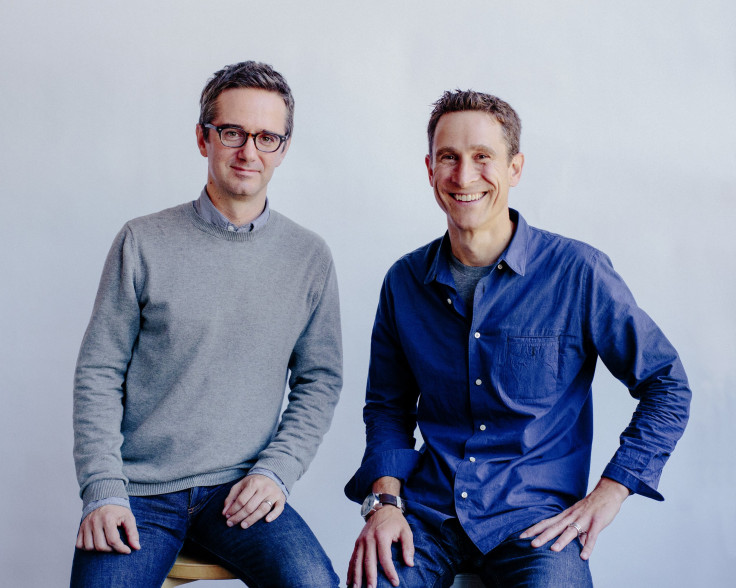'California Sunday,' A Magazine Startup Out Of Silicon Valley, Embraces Slow, Handcrafted Media

California's largest daily newspapers have been closing or scaling back their Sunday magazines for years. But an Internet entrepreneur and prominent magazine writer are using the husks of those once-great institutions to launch a new glossy title this fall, California Sunday.
California Sunday will start appearing in October on affluent doorsteps in the circulation footprint of three dailies: the San Francisco Chronicle, Los Angeles Times and Sacramento Bee. The print title forms the core of a new media company born of a partnership of new and old media professionals: former Digg.com and Federated Media exec Chas Edwards and Douglas McGray, a magazine writer for titles like Wired and the New Yorker and impresario of a live series of Bay Area events, Pop Up Magazine.
The magazine is attempt to create a high-end, general interest magazine about California and the Pacific Rim for Californians. The subject matter is rich and the theoretical market huge, but the idea of a general-interest magazine for California has proven elusive even in good times for media. Sunset Magazine may still exist today, but this attempt bears more resemblance to the long-disappeared New West, founded in the 1970s by New York magazine’s legendary co-founder, Clay Felker.
Editor McGray says the content for California Sunday will be ambitious and rangy with dual editorial guideposts: It must be a great story and it must be unique or peculiar to California. “We are going to start off pretty simple -- great stories with beautiful art,” McGray said. “We have plans to start expanding beyond that in code and film.”
Launching a print magazine -- within a declining print business, no less -- seems insane in this day and age, but there’s some logic to it. Edwards and McGray are paying the newspapers for distribution, much like Target would for an ad insert, and targeting 400,000 people who live in affluent neighborhoods. The rate card for the print edition is $40,000 a page; Edwards says the magazine will launch with 10 advertisers, including Google Play, Lexus, Converse, MailChimp and the Ace Hotel.

“We are using ZIP codes to locate readers that are most similar to fans that show up at our Pop-Up Magazine live events: Men and women between 25-49 who work in creative industries, are heavy consumers of premium media, are early adopters of Apple products, and who do more international travel than average,” Edwards said in an email.
Those kinds of readers are getting harder to find among newspaper subscribers, the majority of whom are now over the age of 50. Only 21 percent of those aged 35-44 read a newspaper within the last day in 2013, according to the Pew Research Center. “They don’t want to target a 50-plus market,” said Ken Doctor, an analyst at Outsell and author of "Newsonomics." “I would think they’d want to target younger audience, but using newspapers that's what they’re getting.”
The idea itself was born out of Pop-Up Magazine, a series of events McGray founded in San Francisco in 2009, where a “magazine” was performed for a live audience. That event series grew in size and started attracting celebrities as participants like Beck, partners like ESPN, and moving into larger venues such as San Francisco's Davies Symphony Hall. From a business standpoint, Pop-Up sold tickets and created sponsor segments where advertisers also participated by performing their own live ads.
“We started thinking about the fact that so much of the media we read does not get made on the West Coast,” he said. “California and the West are huge and influential and interesting -- it occurred to me there was the opportunity to build a broader media company out of Pop-Up Magazine.”
McGray and Edwards have raised funds in the “single-digit millions” from angel investors to pay name-brand writers that have graced the stage at Pop Up Magazine like Susan Orlean, Steve Johnson, Dana Goodyear and Peggy Orenstein, who is a senior editor for the new magazine.
Pop-Up Magazine events break even and will continue. “We view it as an editorial platform,” McGray said. “It's a great place to draw an audience and build community.” But no media company today can thrive on one or even two business models, so Edwards envisages at least four: magazine ad pages, ticket sales, live ads and digital subscriptions. Edwards is launching a studio to work with advertisers to produce content like a series of short films, “California Inspires Me,” with Google Play and "Postcards from Outer California," sponsored by Lexus.
One thing California won’t do is play the volume game of content and page views for online ad dollars. Edwards, who comes from the online ad world, knows how fruitless that strategy can be for publishers. McGray, a magazine writer, has no interest in snatching little bits of attention. Rather, it’s a sit-back Sunday strategy for "handcrafted media."
“We are just trying to make a few good things for one part of the week,” he said. “Look at a great series on HBO -- they just have an eight-episode season. It's an event. We similarly want to have people look forward to a few good things to read on the weekend-- a new weekend ritual. It’s a nice way to publish.”
© Copyright IBTimes 2025. All rights reserved.




















